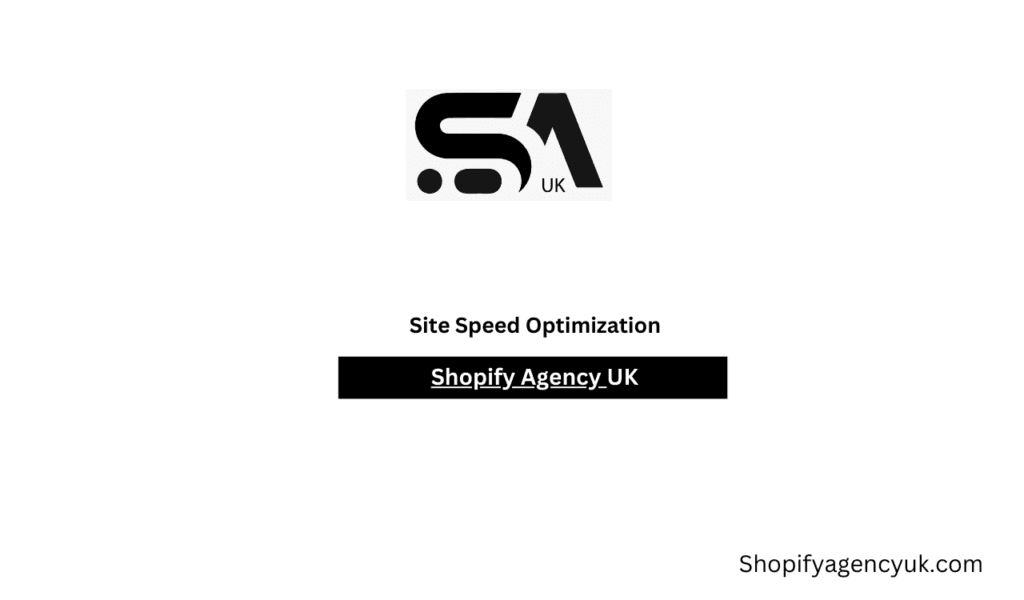Succeeding in the e-commerce world is a very tight market and it is very important to my Shopify store in search engines where it is vital to be seen and attract customers. One of the main SEO factors that has a direct impact on your Shopify website’s SEO and, in general, the user experience of your site is the site speed.
A site that loads quickly can result in higher search engine rankings and an enjoyable shopping experience for clients at the same time. On the contrary, the fact that the download time becomes longer causes the visitors to become more unstable, so there is greater possibility that they can abandon the page, which results in the lower number of sales and bad SEO quality.
Moreover, I will demonstrate the significance of Shopify site speed optimization in your SEO for Shopify Bradford compare the influence of user experiences and SEO rankings on them, and provide you with top strategies to make your store speedy and thriving.
Why Site Speed Optimization is Essential for Shopify SEO

It’s well known that speed is one of the key factors in ranking that Google uses. This is the reason why top-size would not only be the ones that load faster but also provide better UX and are more reliable. Google’s announcement that the Core Web Vitals update had Page Speed, responsiveness, and visual stability as brand new metrics for assessing user-friendly sites has put all these elements in the spotlight. These criteria are a prerequisite for e-commerce platforms like Shopify where sales are directly linked to page load times.
1. Impact on User Experience
It is enlightening for a person to know that a slow website can be the cause behind a visitor’s decision to leave the store without shopping for anything. It has been proved that if a page takes one second longer to load, the result is a 7% drop in conversions. In case of Shopify, where all traffic presents the potential customer, this leads to a large decrease in business volume.
As a custom to faster sites:
- Reduces Bounce Rates: Visitors are going to stay on your site longer when they can quickly move between pages which will increase purchases.
- Improves Customer Satisfaction: A quick-loading store allows customers to move freely through the site, thereby increasing sales.
- Creates Mobile-Friendliness: With most of the e-commerce website traffic being generated through mobile devices, thus, ensuring that mobile users get quick page response is very important.
2. Boosting Search Engine Rankings
Among the elements that search engines’ algorithms love, speed is the popular one because they are vital to the users. A slow Shopify store can have a negative impact on your search engine rankings, thus, making it difficult for potential clients to locate you. Since it’s now a part of SEO, it is crucial for your Shopify website to meet Google’s performance standards.
- Core Web Vitals: Google uses LCP, FID, and CLS as the three metrics it uses to check the speed of the page. Working on these areas can improve your store’s ranking.
- Mobile-First Indexing: Google mainly uses the mobile version of your website for indexing and ranking. Hence, you need a site that is optimized for mobile users in order to succeed on search engines.
How to Measure Site Speed for Shopify SEO
Prior to engaging the optimization process, it is essential to discover how your Shopify store is functioning currently. There are some tools that one can make use of to measure the speed of the site and the areas that need to be improved:
- Google Page Speed Insights: This tool gives a base on desktop and mobile performance, and also suggestions for improvements.
- GT Metrix: Another well-known tool that provides a detailed report about your site speed and practical advice.
- Shopify Speed Score: Shopify has one of their speed score features that you can view in the dashboard and gives you a general idea of how fast your store loads.
These tools measure the different speed-related metrics such as page load time, time to first byte (TTFB) or render time, and give you further insight into what is causing the website to slow down, for example, the images are not properly optimized, or there are too many JavaScript files.
Best Practices for Site Speed Optimization in Shopify
Now that the cursory knowledge of site speed has been set out, I go further into the most result-oriented site speed optimization options available to become top in terms of Shopify SEO and improve the user experience as well.
1. Optimize Images for Faster Loading Times
Pictures can be the really bulky part of a presented webpage and in case they are not adequately optimized they might speed down the Shopify store. In order to reduce load times, the thing you should do is the compression of images without any quality loss.
- Use Image Compression Tools: Devices like Tiny PNG or Image Optim can protect your images from being fully compressed; thus, allowing the files to be smaller in size and faster to load on your Shopify store.
- Use the Right File Format: Divide the photo into JPEG and PNG so that JPEG will be used with those appearing correct while PNG will be used for those with transparent background. Don’t employ BMP or TIFF file formats as they are much larger.
- Lay Back or Lazy Load: Execute lazy loading for images. This means that data is only loaded when it is needed, i.e., when they are on the screen where the user is at.
2. Minimize the Use of Shopify Apps
Shopify app advancement can support the incorporation of operative tools and the introduction of added options to fill your store with the desired features. However, there is this negative part to it which has to do with decline of site performances when you have these apps. Each app corrects a certain feature making alterations to the already existing code which is not good for the store’s proper functioning.
- Evaluate Interactive Devices: Regularly evaluate your installed apps and delete any nonessential ones you may be left with. The less extra code in the store, the faster it will be loaded.
- Replacement of the Most Important App with Custom Code: If at all possible, use only a part of your system that brings out the set of features you are most particular about, i.e., uses custom code.
- Choose Speed-Optimized Apps: When you select the Shopify apps, you should pay attention to those that are claimed to be lightweight and have already been optimized for the specific performance.
3. Use a Fast and Lightweight Theme
In the process of running your Shopify store indeed, the theme of the store has a great impact on its speed. Some of the themes can be slow because they were designed with unnecessary features to satisfy imaginations or the code was not optimized which in turn slow the processes.
- Pick the High-Speed Theme: Choose a theme where the load time is minimum. The theme store of Shopify supplies themes that are designed to upload quickly.
- Avoid Feature-Heavy Themes: Throughout the decision-making process, you may feel it is quicker to pick a theme that includes animations and other features but they can be dragging your site. A simple, light theme that gives priority to performance is what you should go for.
4. Reduce Redirects and Broken Links
There is a high chance that the Shopify store will lag due to the excessive number of redirects and broken links. This glitches the server into preforming extra work to get the handled.
- Redo Links: Employ the means of practical tools to get the hang of the idea which links apart from any useful ones are redirecting, and thus it becomes easier to work out the means of redirecting them directly to the same target without invoking redirect.
- Correct Broken Links: Track down and repair the incorrect links that can be the cause of 404 error pages. Cutting out the broken links is going to make your site even quicker.
5. Enable Browser Caching

The browser caches the static segments of a website like pictures, CSS, and JavaScript files on the user’s device. So, now on the return visits, it takes less time to load the page.
- Create Browser Caching: It is wise to use caching option to store static resources in your browser. This makes it easier for it to load as you move from page to page or should you want to come back installing it directly.
- Content Delivery Network (CDN) Usage: The CDN does the task of distributing your site’s files across many servers around the globe so that users get your servers as close to their sites and the speed will be better.
6. Minimize JavaScript and CSS Files
Many JavaScript and CSS files are able to delay the time for the webpage to get loaded since the web browser has to handle multiple requests to the server. The minification of the files results in a faster loading speed.
- Do Minification: The minification technique is about removing unnecessary characters such as spaces and comments hence reducing the file size. Tools like Minifier or Shopify’s built-in features can help you to do this.
- Deferred JavaScript Loading: Defer non-essential JavaScript so that it loads after the main content. Hence, the essential parts of the page come first.
7. Monitor and Continuously Optimize
It is not just something like a one-off task either. Webpage speed optimization is the practice of assessing your online store’s ability to function properly, finding out what can be changed for better performance, and making the necessary adjustments.
- Assess the Performance: You may use the Google Page Speed Insights or GT Metrix to look up your page’s performance and new directions for possible improvement.
- Experiment with the Improvements: Implement a new feature, included new practices, or make adjustments to your web; everything you do should lead to faster-loading the site or/and its better functionality.
Conclusion
Shopify SEO improvement with Site Speed Optimization is a key element of success. I have merely focused on the optimization of images which will lead to the decrement in unnecessary apps and redirects, the appropriate choice of a speedy theme, and such techniques as browser caching and magnification.
Quicker Shopify stores like Shopify Agency in UK moreover their improved rank on search engines bring about a better experience to members and, as a result, they become more loyal and frequent shoppers on these platforms. In addition, it is important to bear in mind that site speed, which is a factor in tech SEO, is more than this, it is also a demonstration of permission to everyone coming to your site without interferences.
